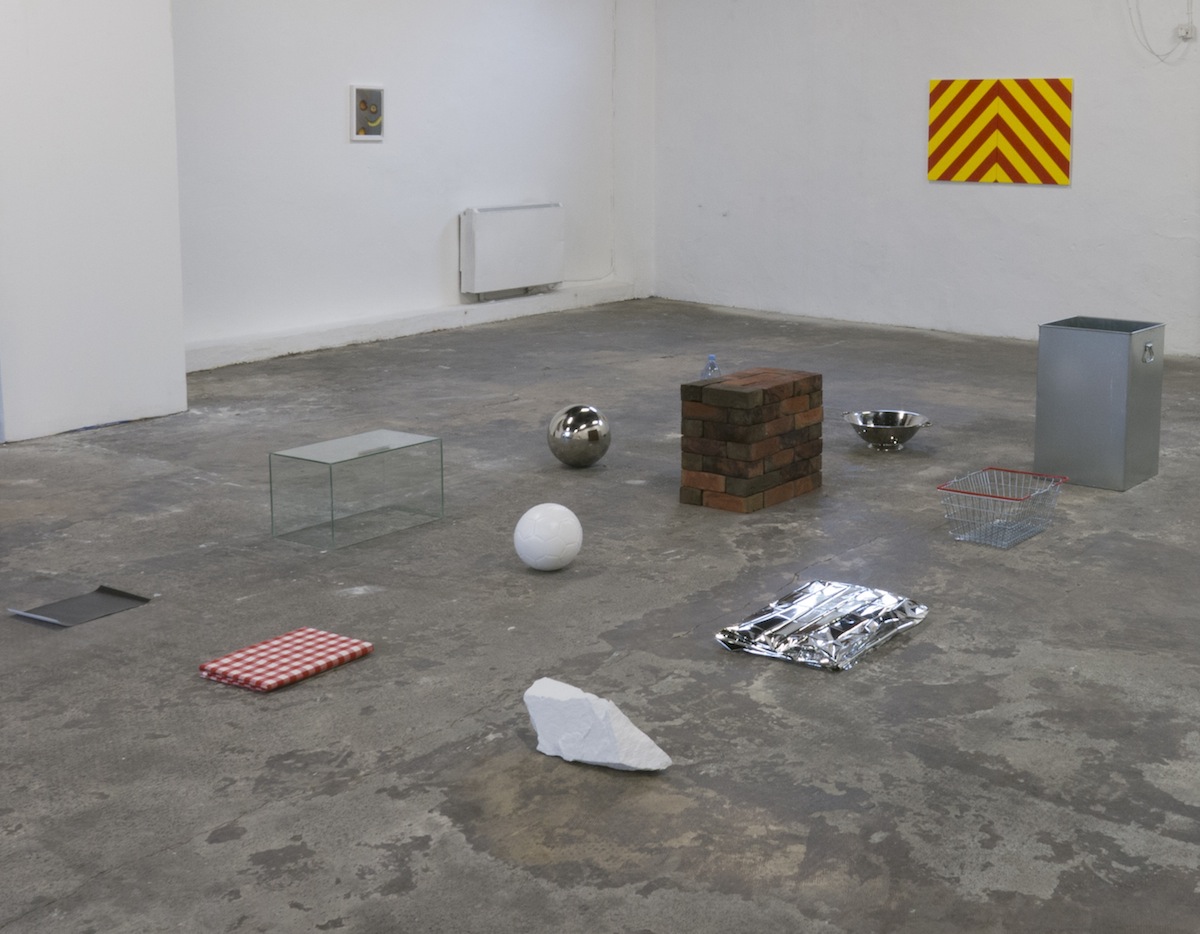Levi Hanes’ Things at 126 Gallery
At first Levi Hanes’ exhibition ‘Things’ makes one feel as if the world has paused. We enter the gallery as an actor in a freeze-frame, negotiating the objects delicately placed on the floor. We must not break the fourth wall, we cannot step into their arrangement however much we are drawn to the spaces between them. The ordering of the pieces into a grid (Evian Water Bottle, Colander, Galvanized Metal Bin Liner etc.), the artist tells us, is “informed by ideas of commonplace alchemy, and an attraction to the functional design of objects of limited use.”
The emptiness between the items, their stillness as they catch the artificial light and cast their own permanent shadows, lends them a sense of lack and an oddness only accrued by repeated viewing. The singularity of their disposition (and here we have started to think of them as a group, a cluster of things in and of themselves, rather than an art piece as a whole) marks them as new once more. An elemental change is well illustrated by Sunlight Exposed Photographic Paper curling up at the edges, as if smouldering still. Louis Sullivan’s famous axiom ‘form follows function’ comes to mind as we question how objects of use, dependent on the compliance of hands, mechanism or material to be ‘complete’, negotiate their new role. A childhood joke also echoes: “What’s pink and fluffy? Pink Fluff. What’s red and invisible? No tomatoes.”
Retreating, we scan the walls instead, where Vehicle Chevron Marking, a diptych of acrylic paint on canvas, blares and glares at us, mimicking traffic and emergency services’ signage. Warning! Danger! It declares and we seek comfort elsewhere, in the soft and hushed intimacy of the giclée prints Fruit Scan 013, 016 and 004. The fruits are huddled together, safe behind glass. We see our own reflection in the surface and feel as if we are being watched as we consider them. The lines and shapes on the floor are echoed in the bend and twist of the fruit. Curves and shadows are confined by the edges of the flatbed scanner, which captures each piece at its apex to the glass.
In 1912 Carl Einstein wrote that “every precise form is an assassination of other versions: mortal anguish cuts the current. More and more reality is decomposed, which makes it less and less obligatory, the dialectic of our existence is reinforced … it is a traumatic accentuation.” There is certainly an element of assassination in Hanes’ exhibit. Elements have been shaped in order to contain – be it materials or liquids, and others have been reshaped or folded. Each retains permanence. The fruit will never rot in its scanner bed. The brick endures and is still permeable. The care in the placement and the softness of the prints’ tones act as a foil to the shiny, man-made machinations of the items themselves. Trauma gives way to humour. What’s yellow and invisible?
